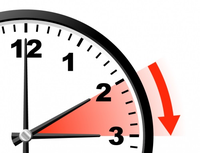 This has indeed been a busy week for good news about Offices participating in the DAS system. Yet another piece of good news is that RO/EP has joined the DAS system. Continue reading “RO/EP joins the DAS system”
This has indeed been a busy week for good news about Offices participating in the DAS system. Yet another piece of good news is that RO/EP has joined the DAS system. Continue reading “RO/EP joins the DAS system”
Georgia patent office joins the DAS system
 This is a busy week for good news about participation in the DAS system. The Georgia patent office, whose formal name in English is the National Intellectual Property Center of Georgia, has joined the DAS system. Continue reading “Georgia patent office joins the DAS system”
This is a busy week for good news about participation in the DAS system. The Georgia patent office, whose formal name in English is the National Intellectual Property Center of Georgia, has joined the DAS system. Continue reading “Georgia patent office joins the DAS system”
Israel Patent Office joins the DAS system
 I am delighted to have learned that the Israel Patent office has joined the DAS system. Continue reading “Israel Patent Office joins the DAS system”
I am delighted to have learned that the Israel Patent office has joined the DAS system. Continue reading “Israel Patent Office joins the DAS system”
Broken links in “get your numbers in for the toteboards”
Hello readers. After comments from several people I went to look closely at my four recent posts:
- Get your numbers in for the 2018 US plant patent toteboard
- Get your numbers in for the 2018 US design patent toteboard
- Get your numbers in for the 2018 US utility patent toteboard
- Get your numbers in for the 2018 US trademark registration toteboard
Each blog article contains four important links for you to click on:
- a link to the questionnaire where you can enter your numbers for the particular category in that particular blog post, and
- crosslinks to the other three blog posts.
In each case the questionnaire link works fine so far as I am aware. But until today, each place where there was a crosslink to one of the other three blog posts, the crosslink was no good. It asked for a user ID and password instead of taking you to the desired page.
Thanks to alert readers, I have hopefully corrected the crosslinks.
Hopefully everybody will get their numbers in soon.
Get your numbers in for the 2018 US Plant Patent tote board
The goal of this toteboard is to list the firms that helped clients to obtain US plant patents in 2018. It will rank the firms according to the number of US plant patents obtained. Respondents are asked to report only US plant patents for which the firm is listed on the front page of the granted patent. Please respond by Thursday, March 21, 2019.
You can see the previous Toteboards here.
To send in your numbers for the 2018 US Plant Patent tote board, click here.
It is also time to report your numbers for the 2018 US Design Patent tote board and the 2018 US Utility Patent tote board and the 2018 trademark registration tote board.
Get your numbers in for the 2018 US utility patent tote board
A year ago I published the 2017 US Utility Patent Toteboard and before that, the 2016 US Utility Patent Toteboard, and a year before that the 2015 US Utility Patent Toteboard. Now it’s time to finalize and publish the 2018 US Utility Patent toteboard.
The goal of this toteboard is to list the firms that helped clients to obtain US utility patents in 2018. It will rank the firms according to the number of US utility patents obtained. Respondents are asked to report only US utility patents for which the firm is listed on the front page of the granted patent. Please respond by Thursday, March 21, 2019.
You can see the previous Toteboards here.
To respond to be listed in the US Utility Patent Tote Board, click here.
It is also time to report your numbers for the 2018 US design patent tote board and the 2018 US trademark registration tote board and the 2018 US plant patent tote board.
Whither Daylight Saving Time?
More than five hours have passed since my blog posting that points out that right now you probably have an extra hour for e-filing of stuff at the International Bureau of WIPO. Why do you have this extra hour? You have this extra hour because probably you are in the US and you set your clocks forward. And (this is the important part) the folks in Switzerland did not pick today to set their clocks forward. (They will set their clocks forward in about three weeks, on March 31.)
Anyway, during this past five hours I sort of figured that at least one alert reader would have posted a comment about the imminent demise of Daylight Saving Time. Yet, astonishingly, this has not happened! So I will now discuss the imminent demise of Daylight Saving Time. Continue reading “Whither Daylight Saving Time?”
e-filing at WIPO – you get an extra hour
 It’s that time of year again. People in the US who sometimes e-file stuff at the International Bureau at WIPO will have memorized exactly what the local time is that works out to being midnight in Switzerland … and for the next three weeks, the answer to this question will be different from the usual answer. Continue reading “e-filing at WIPO – you get an extra hour”
It’s that time of year again. People in the US who sometimes e-file stuff at the International Bureau at WIPO will have memorized exactly what the local time is that works out to being midnight in Switzerland … and for the next three weeks, the answer to this question will be different from the usual answer. Continue reading “e-filing at WIPO – you get an extra hour”
US patent prosecution boot camp – Philadelphia in May
There are only a few good ways for a new US patent practitioner to get training. One of these ways is the AIPLA Patent Prosecution Boot Camp, which will take place May 13-15, 2019 in Philadelphia.
Your truly will once again have the honor of serving with the other faculty members of this boot camp. I know, having served on the faculty of this boot camp for many years now, that the other practitioners who give their time and energy to this program are among the most skilled, experienced, and generous as any in the patent profession.
To find out more, or to register, click here.
Surface Phenomena
I’m going to reveal a practice tip that I had been keeping to myself for the past thirty years of patent practice. The practice tip is to be alert to the possibility that some important thing about a client’s invention may turn on “surface phenomena”. My main point being that as far as I can tell, nobody actually knows how most surface phenomena work, and so you can use the phrase in some client/inventor discussions, and the client/inventor will think you are very smart regardless of whether you are actually very smart. Continue reading “Surface Phenomena”
